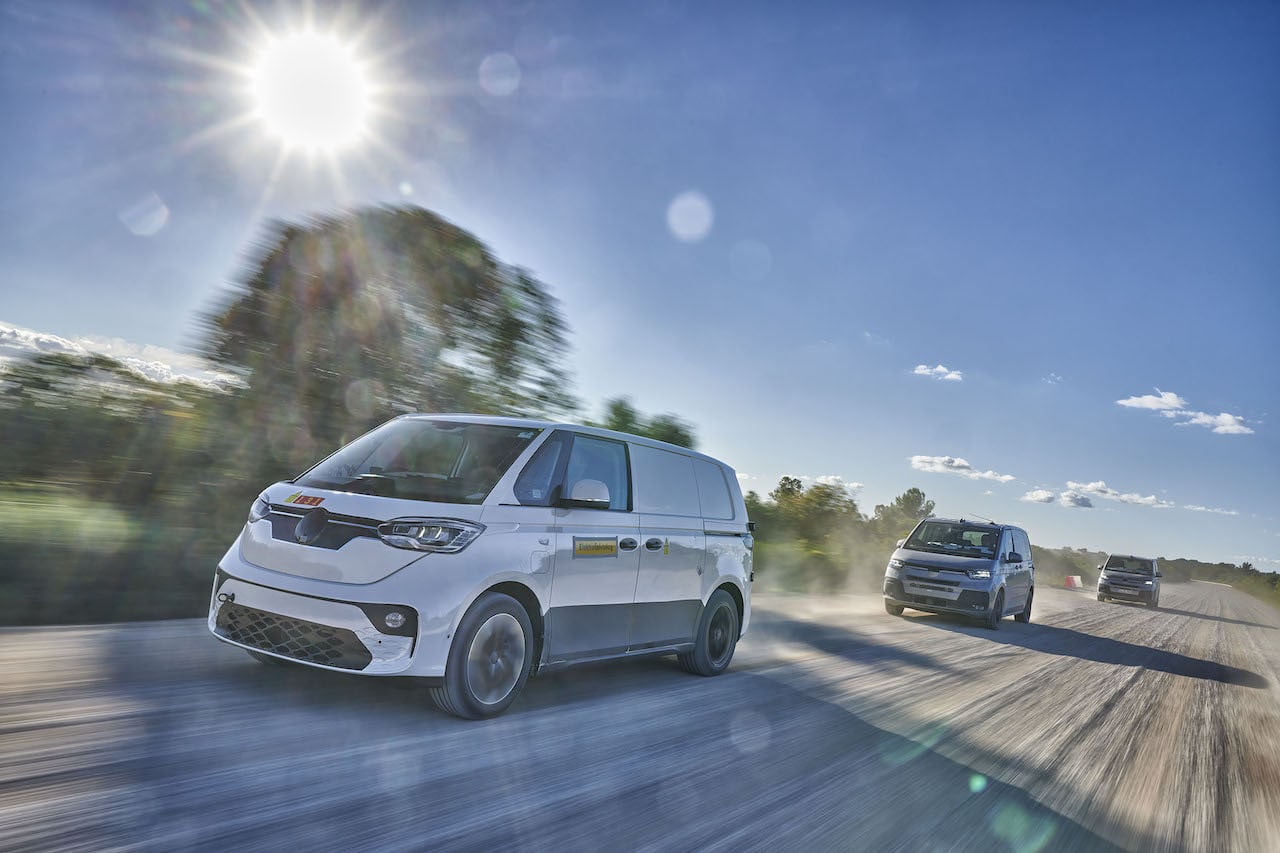A comprehensive documentary has been published on the development work done on the ID. Buzz and ID. Buzz Cargo
Hanover, Germany — Between the unveiling of the ID. Buzz concept vehicle and the production model, which will be delivered to European customers this fall, there were around five years of hard work from the development team at Volkswagen Commercial Vehicles and Volkswagen Passenger Cars. In a new documentary, a VW film crew looks at: how the designers managed to transfer the basic concept of the legendary original T1 Microbus and the styling of the concept vehicle into an all-electric bus; how the engineers were able to satisfy the safety elements, dynamics, and practicality that customers demand; and what the production and components staff had to do to ensure that the ID. Buzz is able to be built alongside other so-called “Bulli” models (T6.1 and Multivan) on one line in Hanover, Germany.
Developing the electric Microbus and a panel van called for cross-brand cooperation and a division of labor, with designers and engineers looking for the best possible concept that combined all the requirements of the vehicles. Seventy years of Bulli know-how was incorporated into the ID. Buzz, a vehicle designed to thrill both the existing fan community and new customers and to be as efficient as possible. The low-friction components of the Modular Electric Drive Kit (MEB) contribute to this, as do good body, underbody, and wheel aerodynamics. Following lots of detailed work, the result is outstanding: the 0.285 drag coefficient (cd) of the European ID. Buzz is lower than that of any other Bulli.
The first few hand-built prototypes are helping decide whether the design data and simulations from the virtual world have been transferred to the real world. The proof of quality lies in testing. To ensure that the ID. Buzz fulfills Volkswagen’s highest quality requirements, the electric ‘Bulli’ was put to the test over a complex and grueling marathon—all over Europe and under extreme conditions. These included extreme heat, in arid and tropical climes, and extreme cold, from dry to dank, along with many places with dirt roads. After this, track testing simulated rain, snow, ice, and dusty conditions to identify any potential for problems.
The ID. Buzz and ID. Buzz Cargo demonstrated the handling potential of their all-round independent suspension on snow and ice in the far north of Scandinavia. Other aspects examined during cold weather testing were the design of materials, the electric and electronic functions, the chassis set-up, acceleration, braking, and steering at low coefficients of friction, and the thermal management of the whole vehicle.
And the testing is done in-depth: in the cold chamber, for example, tests are run to see how quickly an iced-up outside mirror is cleared by its heater. To pass, the mirror—preconditioned at minus 20 degrees Celsius—must provide a clear view to the rear after just three minutes.


